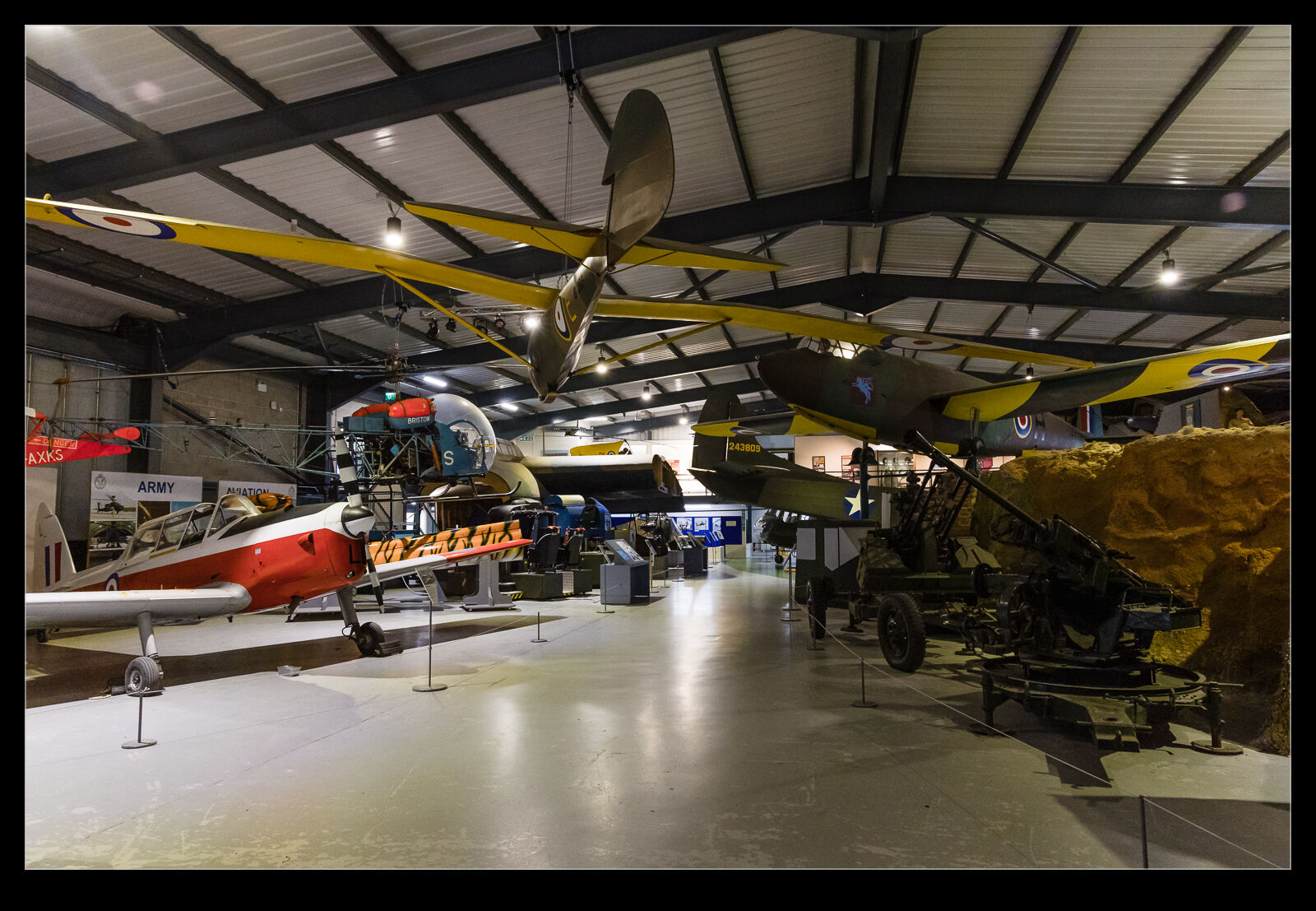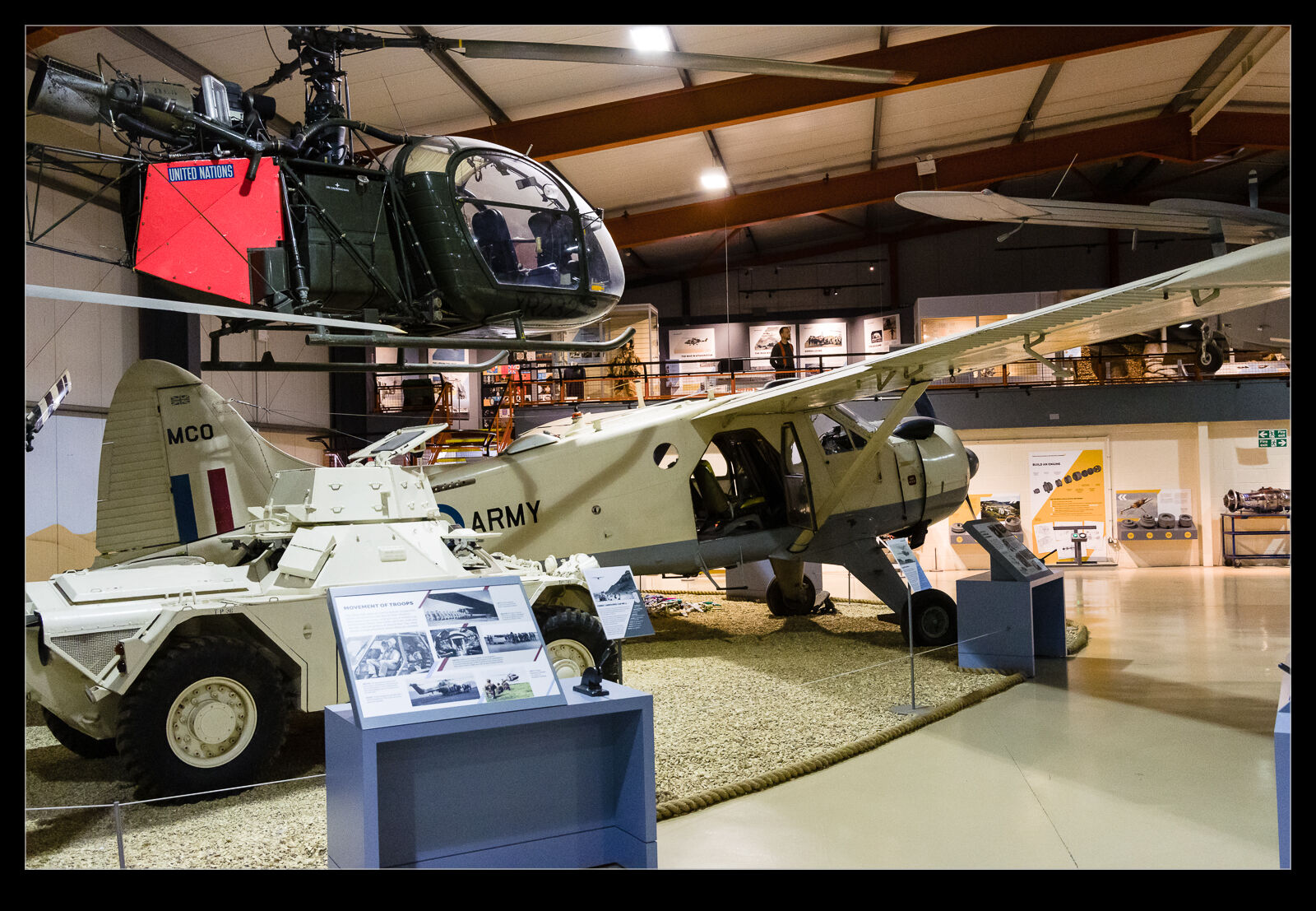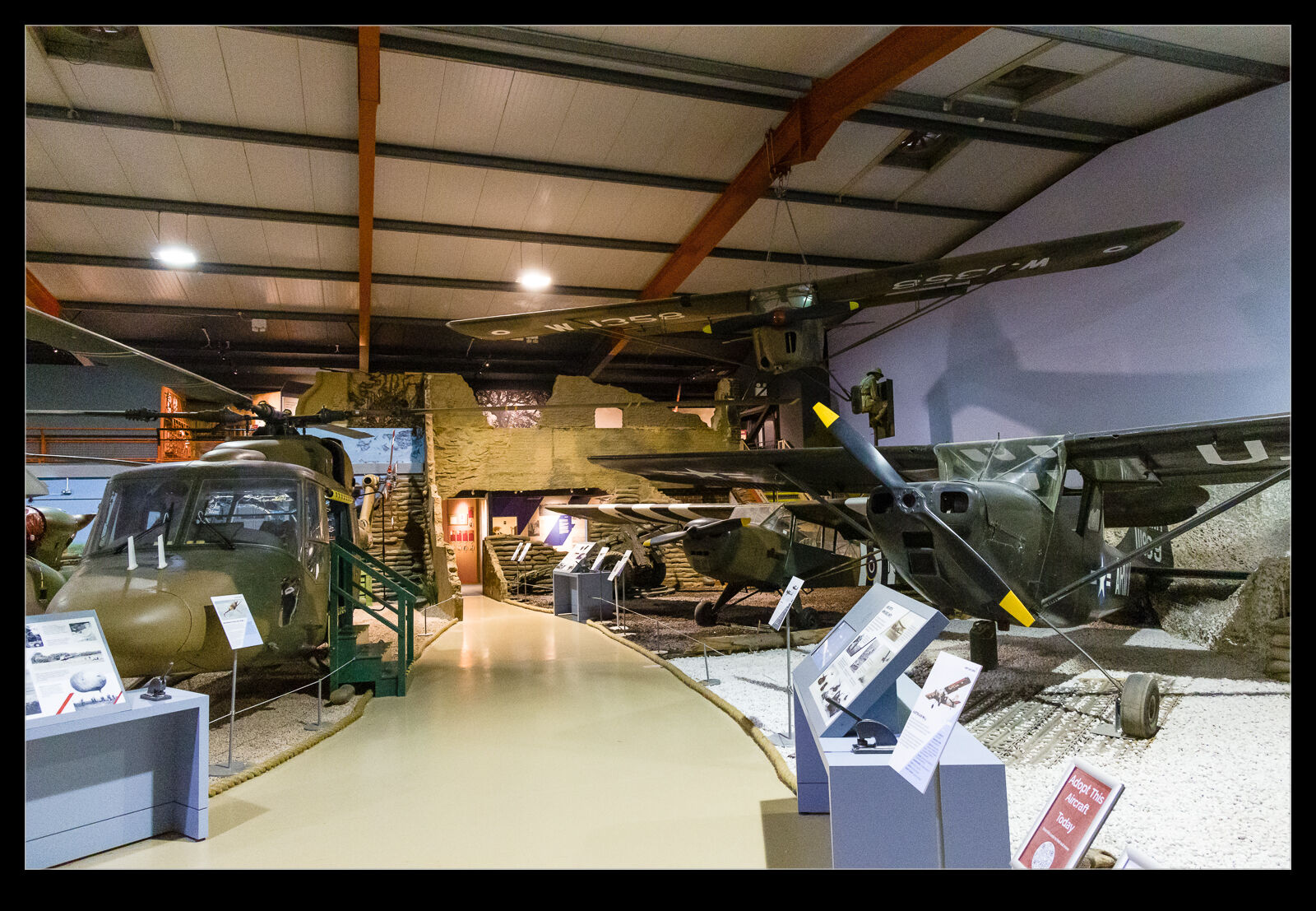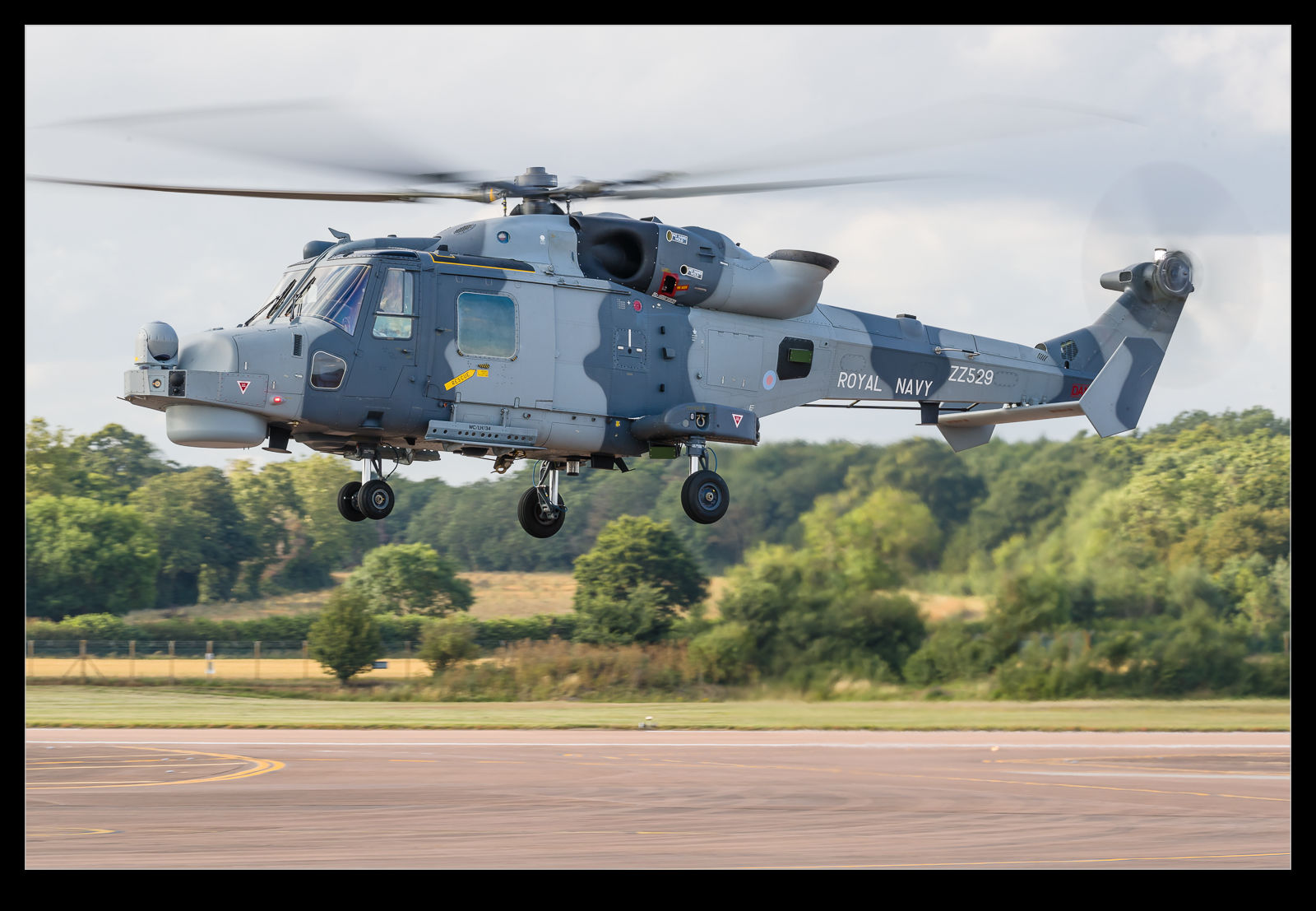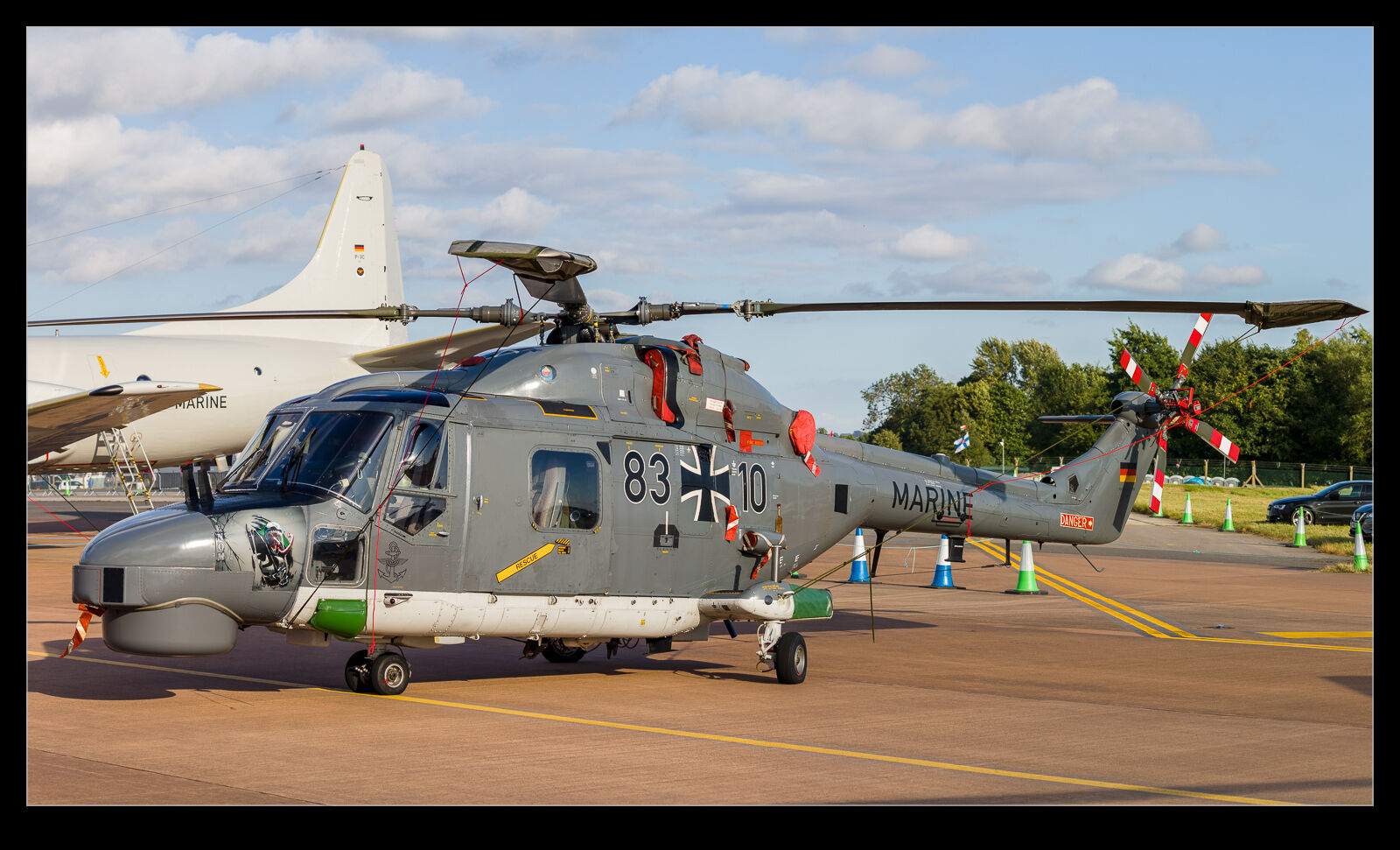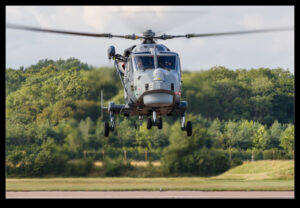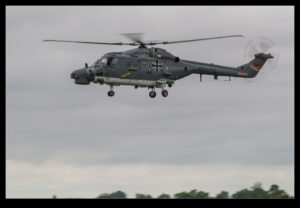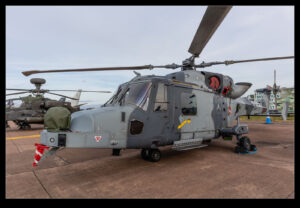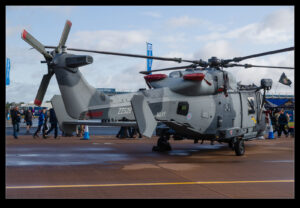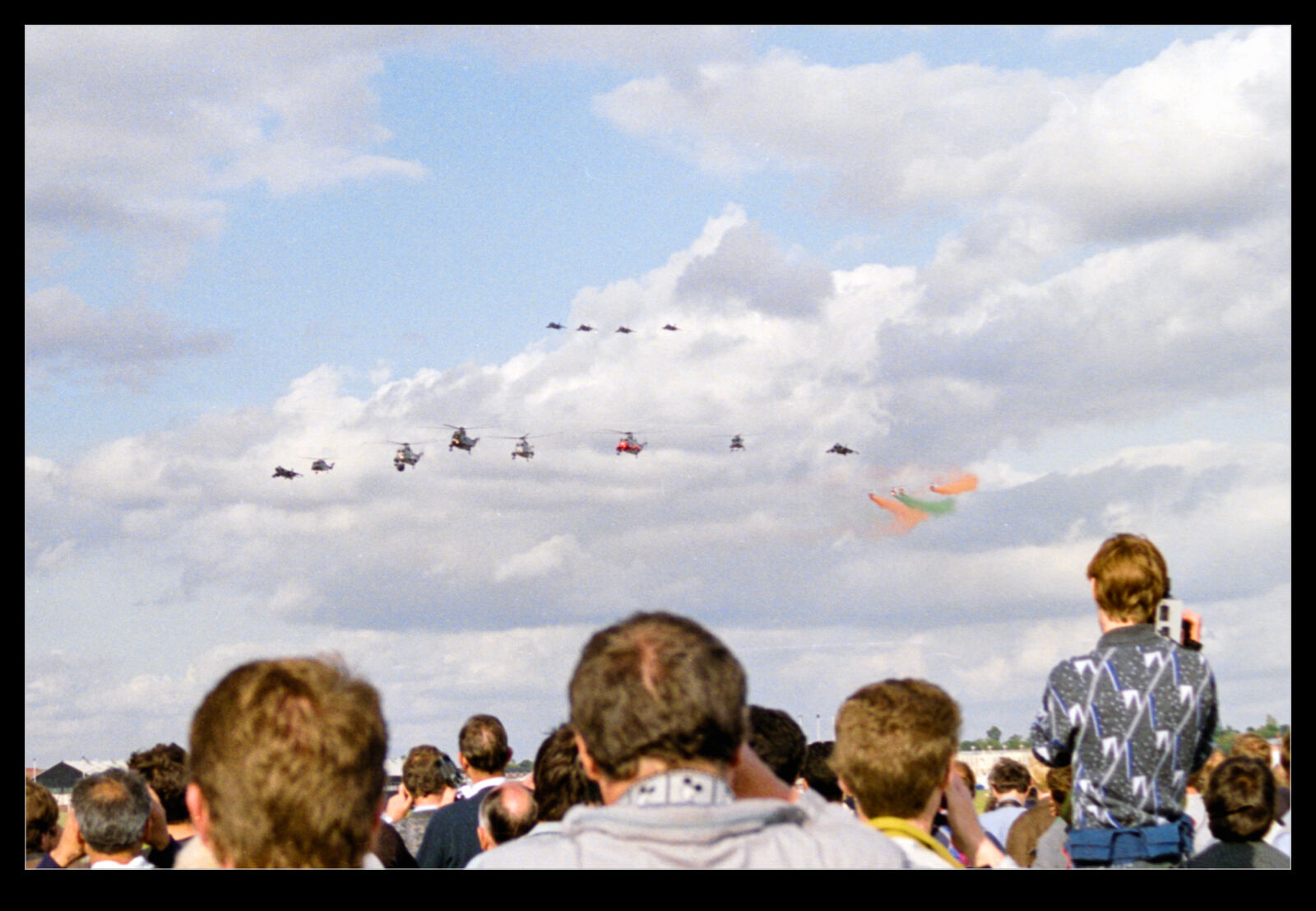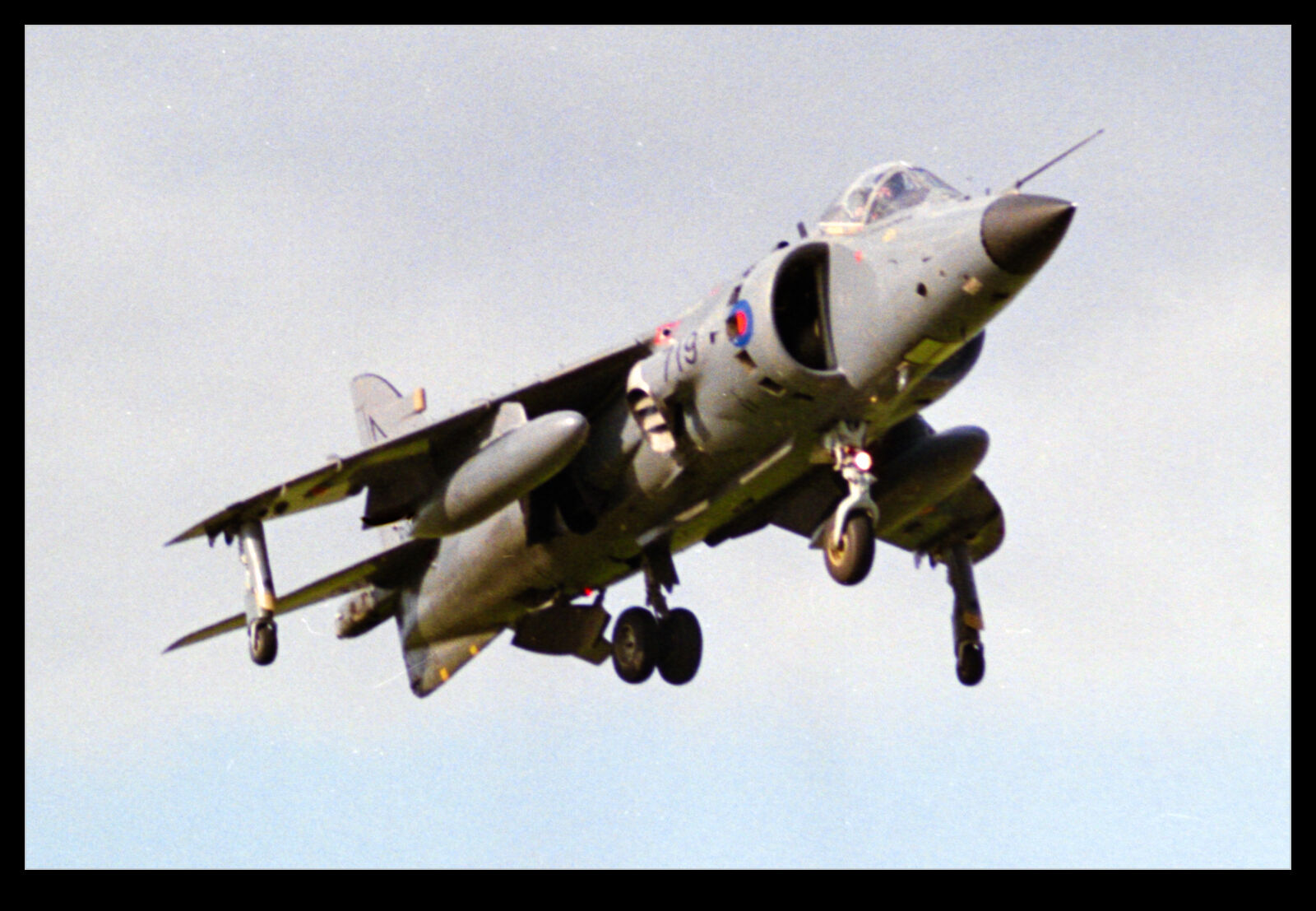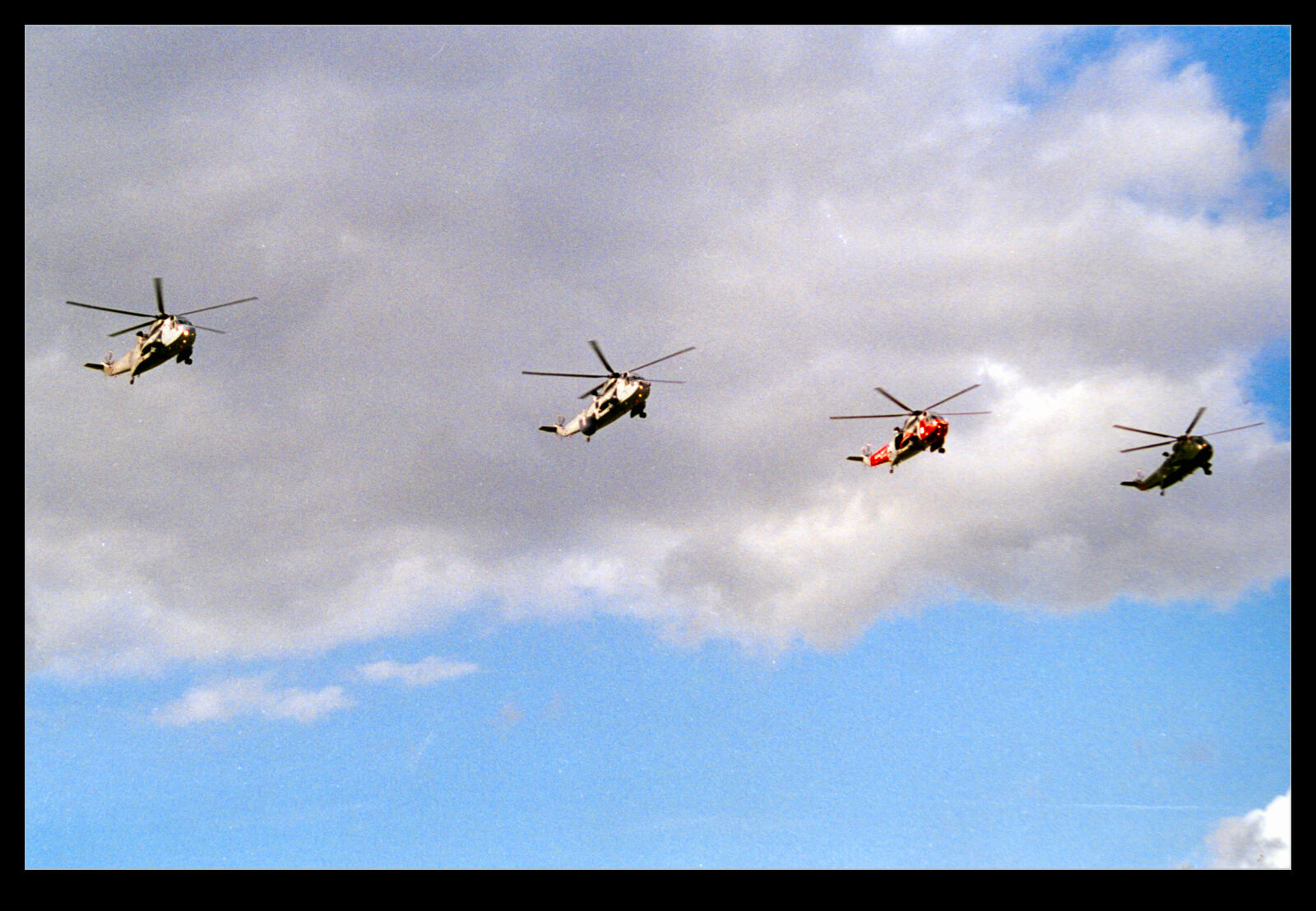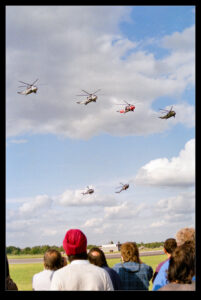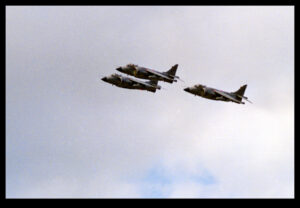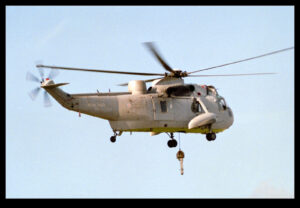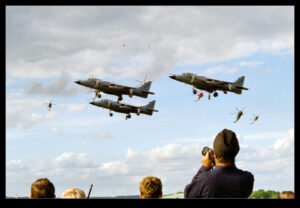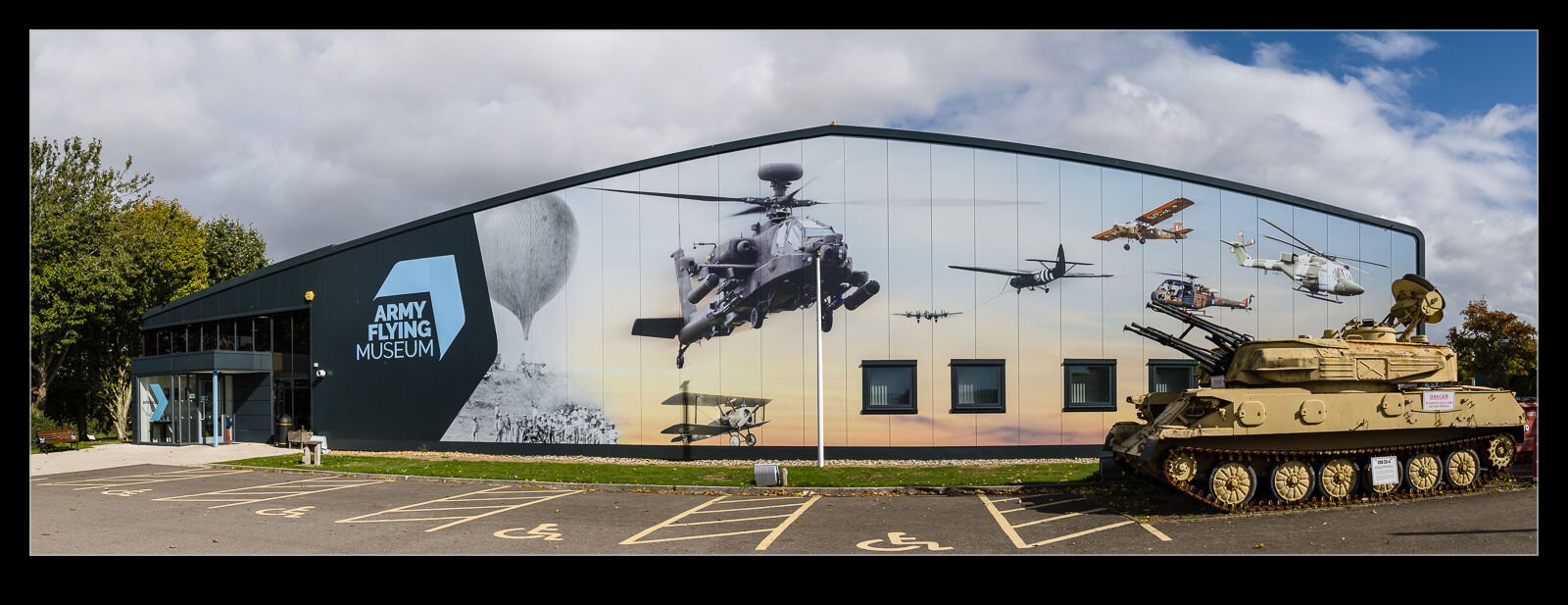 Our vacation in the UK wasn’t about aviation exploits but, if an opportunity presents itself, it would be churlish not to follow up. I had made arrangements to visit my friend Paul while I was in Hampshire and, halfway between us is Middle Wallop, home of Army aviation in the UK and also a museum. I guess that would be a good place to meet up.
Our vacation in the UK wasn’t about aviation exploits but, if an opportunity presents itself, it would be churlish not to follow up. I had made arrangements to visit my friend Paul while I was in Hampshire and, halfway between us is Middle Wallop, home of Army aviation in the UK and also a museum. I guess that would be a good place to meet up.
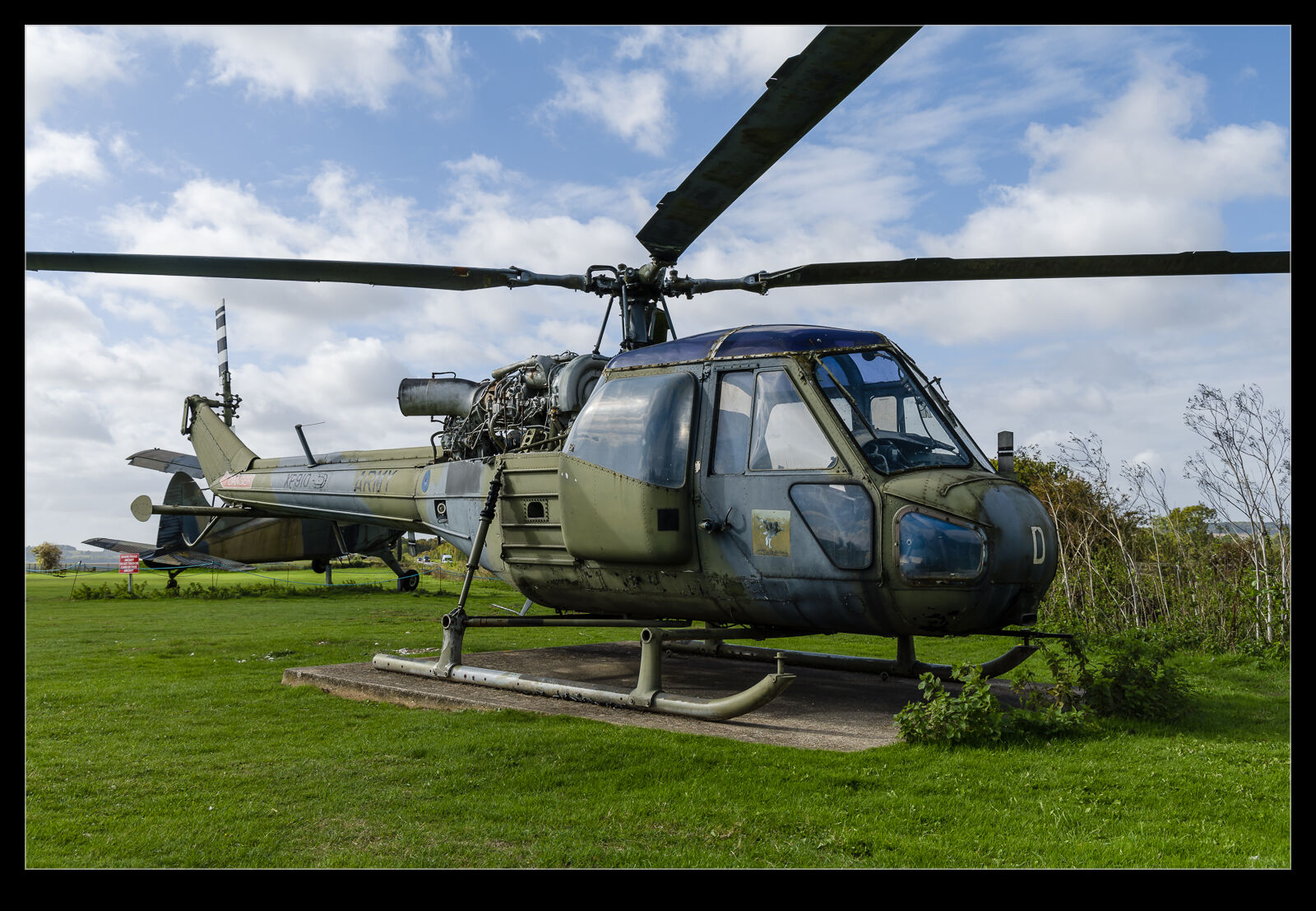 The museum isn’t large but it has recently gone through some refurbishment and it is definitely a good place to spend a couple of hours. Army aviation has a strong rotary element to it but there has also been plenty of fixed wing activity. The collection is a good reflection of both. I will save one exhibit for a separate post but there are plenty of others. The Lynx was a big part of the Army’s fleet for many years and the example that they have in the first hangar is actually a development airframe that has been restored. The three windows on the cabin door are the most conspicuous identification item. There is another operational Lynx in the second hangar too.
The museum isn’t large but it has recently gone through some refurbishment and it is definitely a good place to spend a couple of hours. Army aviation has a strong rotary element to it but there has also been plenty of fixed wing activity. The collection is a good reflection of both. I will save one exhibit for a separate post but there are plenty of others. The Lynx was a big part of the Army’s fleet for many years and the example that they have in the first hangar is actually a development airframe that has been restored. The three windows on the cabin door are the most conspicuous identification item. There is another operational Lynx in the second hangar too.
 A selection of Austers are included in the displays. There is also a Scout (with a second one on the grass by the parking lot). An Agusta 109 is tucked away too. This example was in service with Argentina in the Falklands and was co-opted by the UK forces when they took control. It was used for support to the SAS along with a second example. They ended up buying two more so I guess they worked well. The Beaver was also used extensively with one sitting outside too. The Alouette had a career with the Army but was not as widely used. It is still displayed, though. There are some old types reflecting the early days or military aviation too.
A selection of Austers are included in the displays. There is also a Scout (with a second one on the grass by the parking lot). An Agusta 109 is tucked away too. This example was in service with Argentina in the Falklands and was co-opted by the UK forces when they took control. It was used for support to the SAS along with a second example. They ended up buying two more so I guess they worked well. The Beaver was also used extensively with one sitting outside too. The Alouette had a career with the Army but was not as widely used. It is still displayed, though. There are some old types reflecting the early days or military aviation too.
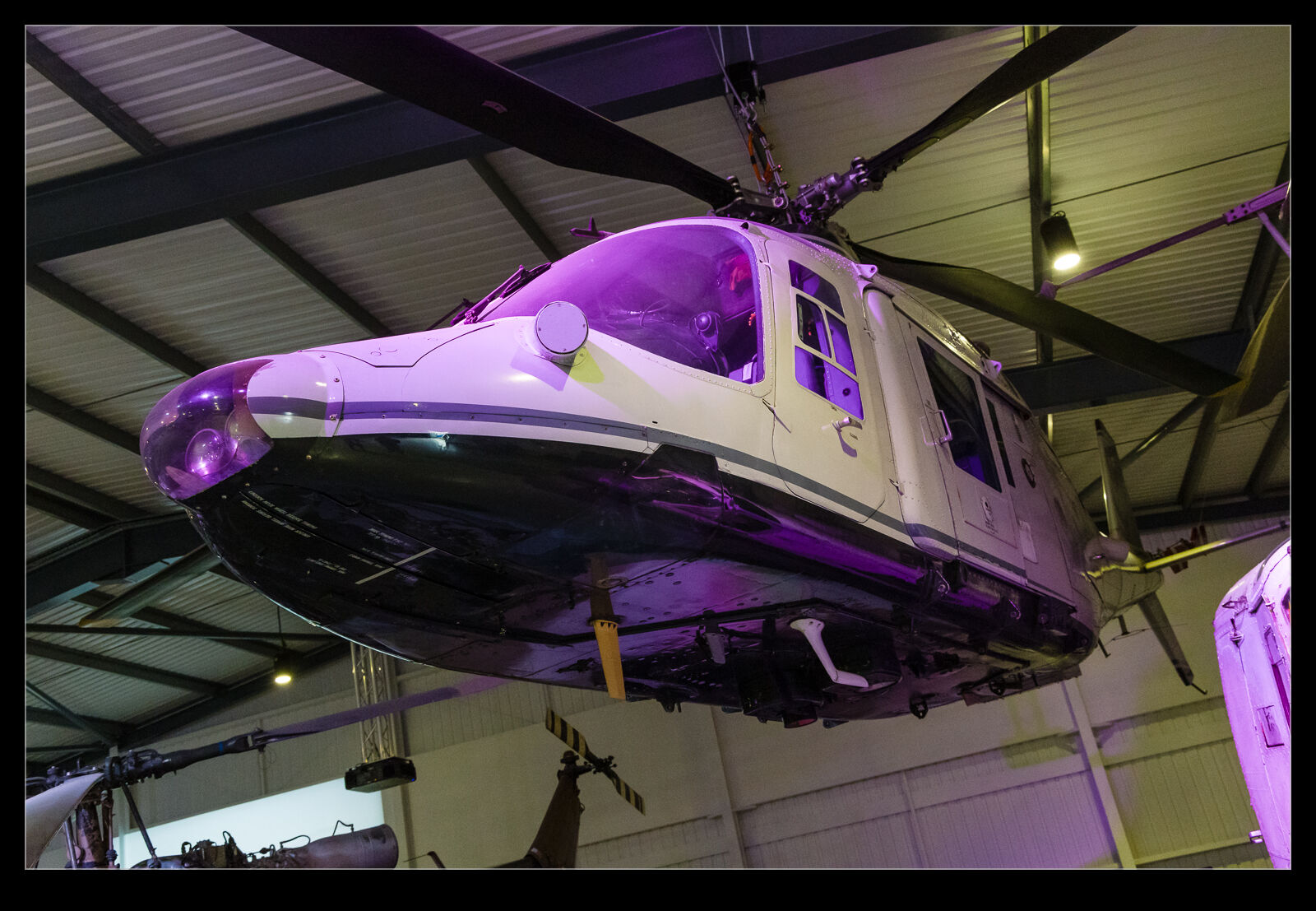 The only thing that confused me was the name. I have seen it called the Army Flying Museum (on the wall) and the Museum of Army Aviation. I wonder which it really is!
The only thing that confused me was the name. I have seen it called the Army Flying Museum (on the wall) and the Museum of Army Aviation. I wonder which it really is!
